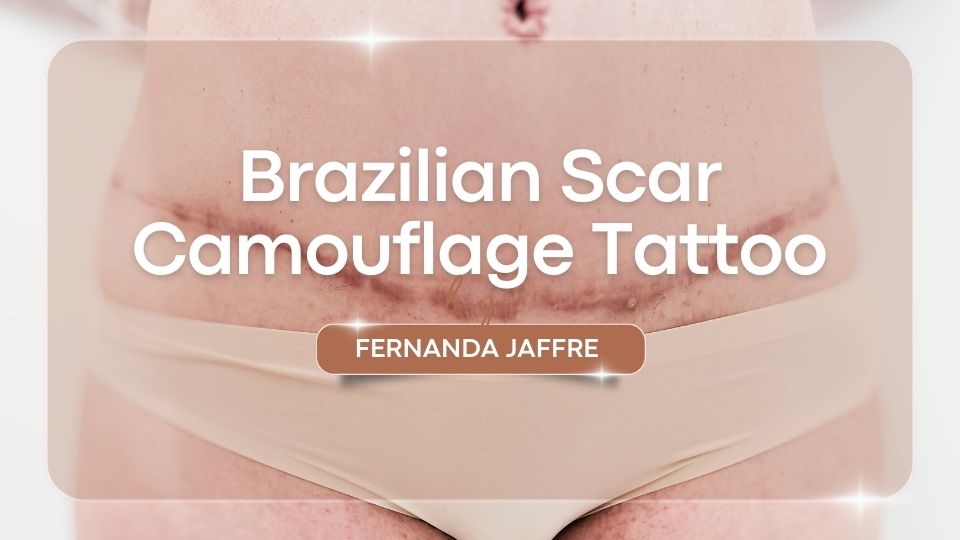
Thousands of women and men dream of one day performing that long-awaited plastic surgery.
Some medical procedures are more frequent, such as silicone implants or tummy tucks, while others are more complex, such as abdominoplasty 360, brachioplasty (arm lift) or coxoplasty (thigh lift).
Whether out of necessity or vanity, the number of people interested in surgical operations has risen dramatically in recent years.
However, these operations can sometimes leave scars on these patients that go beyond skin marks, leading them to question whether they made the right decision.
In this post, you will learn why tattooing scar have grown so popular globally.
The scar camouflage tattoo technique is a tattoo procedure that visually conceals scars, making them less visible and, in some circumstances, virtually imperceptible.
Consequently, its primary goal is to diminish the difference in color between the scar and the patient’s skin, resulting in a more uniform and smooth appearance of the skin.
The Brazilian scar camouflage technique has the ability to both lighten a dark scar and darken a scar that is lighter than your natural skin tone.
Consequently, you will now experience a significant boost in self-assurance -even in situations that formerly caused you unease or perhaps even embarrassment- as your scars now are concealed matching your natural skin color.
Turn on subtitles.
For us to do scar camouflage, we must first examine the skin of our patients.
Once this skin is examined, we create a unique foundation formula that functions similarly to a makeup base, except that we can apply this base inside the scar to alter its color and so conceal it.
Lighter or darker, it gives your skin a more natural appearance and increases self-esteem.
After that, the “ugly scar” in your skin will be less visible to everyone who looks at you.
The method consists of several steps. First, a pre-assessment is performed to evaluate the scar, discuss expectations, and establish whether skin camouflage tattoo is appropriate for the personal case of the patient.
During the scar camouflage session, the dermopigmentation professional will prepare the skin by cleaning and sanitizing the treatment region.
He will then choose the pigments that best match the patient’s skin tone and apply them to the scar using a specific scar tattooing technique.
To achieve a natural appearance, the pigment is meticulously applied to the scar area using a variety of needle techniques and layers.
To get a harmonic effect, the professional works in layers, gradually adding the appropriate colors and qualities.
Although it is impossible to anticipate how many sessions are required because this is a process involving particular cases of each patient, the average is 2 sessions and, it is frequently feasible to see significant improvements after only one session.
Since it is a tattoo technique, we can consider the procedure permanent.
Concerning the results, nonetheless, it is directly related to the patient’s satisfaction.
It is therefore, it is critical to emphasize that just because the technique is permanent does not imply that the results are permanent as well.
The durability of the camouflage tattooing cannot be predicted for each patient due to a variety of reasons, however, the scar camouflage tattooing typically lasts 3 to 5 years.
Fernanda Jaffre considers the outcomes of scar camouflage to be: durable. I mean, it may endure for many years.
I’ve had patients return to do the retouch for the procedure after 6 years.
Yes, you can. Scar camouflage is a medical tattoo, thus it behaves similarly to an artistic tattoo in the sun.
When the technique is properly done no color discrepancies when sunlight is exposed.
Your life will go on as usual, including exposure to sunlight!
You simply need to adhere to the healing period for your camouflage scar, which is at least 40 days.
As a result, following the specialist’s instructions is critical for achieving the best outcomes and avoiding issues like infections, irritation, and premature pigment fading.
Watch master Fernanda Jaffre’s explanatory video on scar camouflage x sun x skin with tanned tattoo camouflage:
Pain is something relative, but in more than 90% of cases patients usually do not complain of any pain.
The session takes only about 2 hours on average.
Camouflage recovery takes 90 days on average.
The camouflaged region will become irritated and dark in the first few days, which is quite natural due to the procedure’s friction, and will subsequently lighten until the 90 days are up.
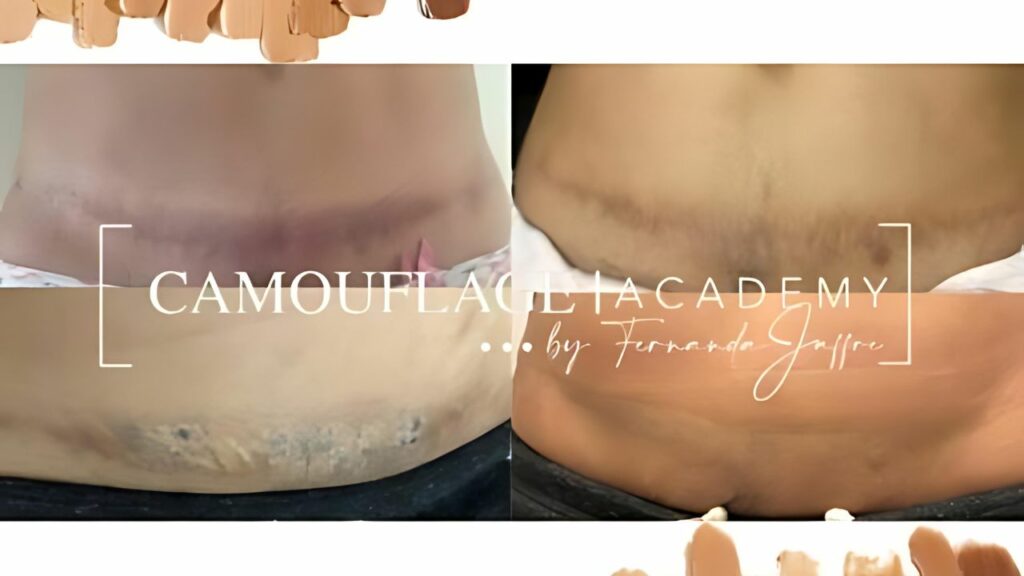
Learn more about healing process of a scar camouflage tattoo.
Some of our tattoo scar results.
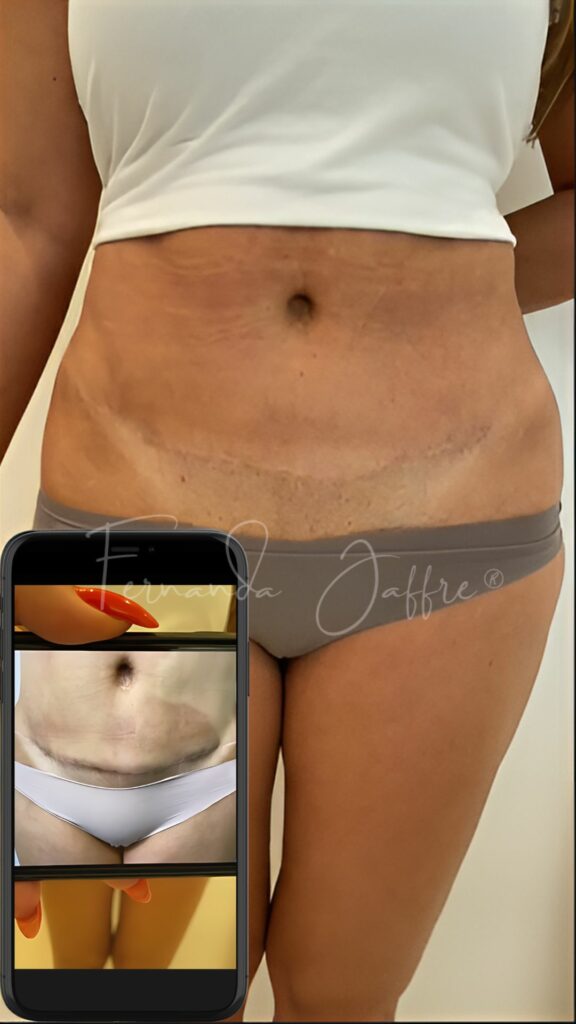
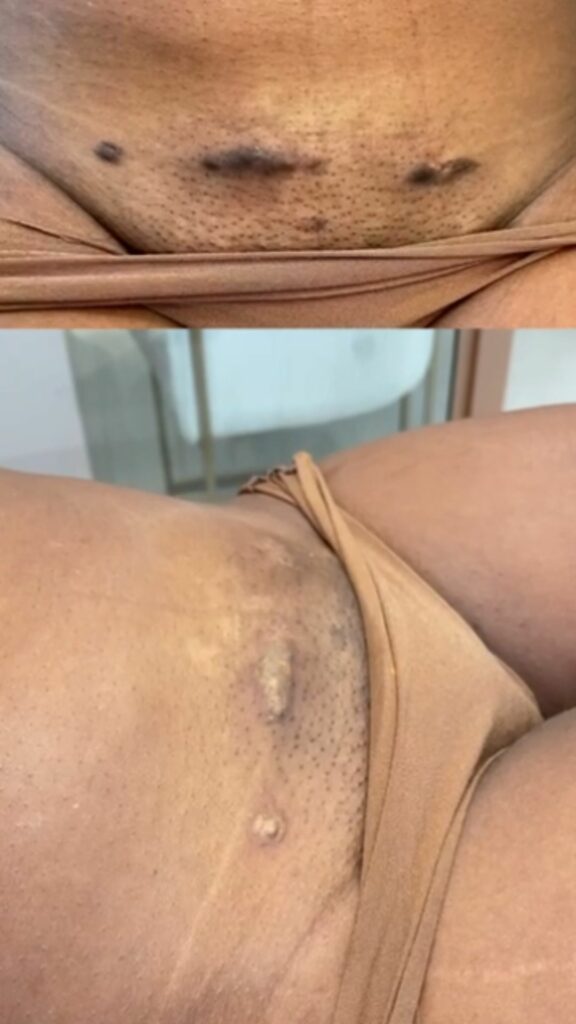
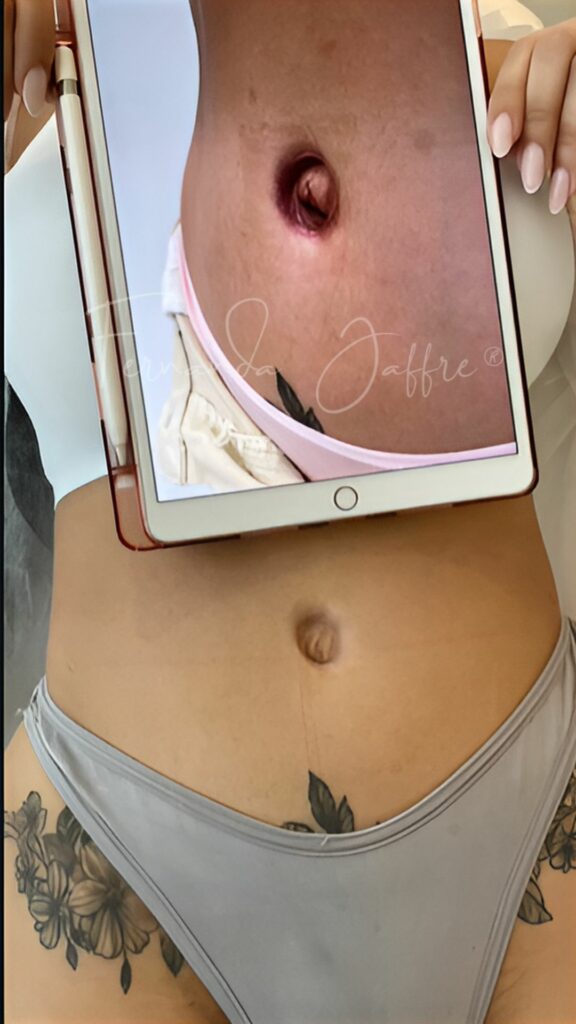
No. You have to wait till the scar has healed. Normally, the waiting time to cover up a post-surgical scar is minimal about 6 months to 2 years.
So, the doctor is the specialist, and he must provide the release.
The time required to perform concealing for accident scars, insect bites, acne, and other conditions is shorter, as is each individual’s healing time.
A medical consultation may be necessary.
If it’s the hue, the only technique currently available is skin-color pigmentation.
However, if the texture is also a concern, there are other alternatives available.
Bellow 11 scar treatment:
Absolutely not.
Micropigmentation, often known as permanent make-up or permanent cosmetics, was specifically designed for use on parts of the skin that are believed to be more fragile.
This procedure is particularly well-suited for facial areas, areolas, lip pigmentation, and even dark circles, among other applications.
The reason for this is that the materials utilized in this technique are specifically intended for application to surfaces.
As an illustration, the pen utilized in the PMU (dermograph) is a highly fragile device with a motor that has a very limited operational capability.
Although there are machines capable of performing both tasks, most of them do not have the necessary RPM.
If a multifunctional pen with the required RPMs is available, the procedure will no longer be performed using the PMU technique, but rather through tattooing, as it utilizes the specified technical parameters.
Using this pen on body areas instead of facial areas can overwhelm the machine’s motor due to the density, texture, and other aspects of body skin.
This can lead to the device malfunctioning and perhaps inflicting damage to the client’s skin. It is also considered a semi-permanent technique.
Consequently, micropigmentation scar camouflage does not exist. The sole method capable of concealing a scar is through the utilization of the authentic Brazilian camouflage tattooing technique.
Ink-less stretch marks camouflage, also known as micro-needling, is an aesthetic procedure that aims to improve the structural appearance of stretch marks through micro-lessions on the skin, stimulating collagen and elastin production.
Despite the name, additives such as serums are used, however, it is not able to conceal stretch marks without the use of ink.
About aftercare: There are various steps to follow after the camouflage treatment to disguise scars, but the most popular are:
For a better experience, in first 3 days:
After 3 days, discontinue ice and use Bepantol derma spray as directed by your specialist.
For the first 30 days:
Contraindications include:
The risks of the technique are minimal if carried out with an experienced specialist.
Although it may appear to be a straightforward task that can be performed by anyone, it is actually more complex than it seems.
The professional should possess expertise in precisely matching the pigment to your specific skin tone and applying it in a manner that takes into account the distinctive characteristics of each patient.
For example, a needle thickness and millimeters of different should be used in each location of the body; for each brand, whether stretching marks, scars, stains, or vitiligo, the type of trace, and the number of layers, all this influences us to obtain a more natural and harmonious result.
First and foremost, it is imperative to clarify that the laser technique cannot remove camouflage tattooing.
The laser operates by discerning the hues of pigments infused into the dermis. Because the scar camouflage possesses a color closely like the skin, it is unable to differentiate between pigmented areas and the natural skin.
Therefore, both the professional laser operator’s mistake and other factors, such as a negative experience, the pigment may undergo oxidation, causing it to become darker within the skin.
In more extreme instances, the skin may suffer from significant burns.
Hence, it is essential to undertake the removal of improperly done camouflage tattooing using a precise technique.
There are two potential scenarios for remover where scar camouflage is not successful:
Both methods should exclusively be performed by highly skilled experts.
The same cases are used to remove unsuccessful stretch marks camouflage.
You deserve to feel good about yourself again! Request a consultation by clicking here.
Indeed, medical tattooing on areolas is feasible.
Four scenarios exist in which the method can be applied:
Total areola reconstruction: Mostly, mastectomy procedures or nipple necrosis following mastopexy surgery are the causes of total areola reconstruction.
Here, the patient’s 3D areola cannot be developed without cosmetic tattooing or permanent makeup micropigmentation.
This is the reason having a qualified scar camouflage expert artists is crucial.
It can be done using the permanent makeup or tattooing technique. The tattooing technique lasts longer.
Areola contouring: One of the most typical scars from mastopexy is called the periareolar scar, which is formed by the model of the areola’s incision.
One can conceal the scar and solve the areola contour.
Partial areola reconstruction: Usually, this results from the patient losing a portion of the areola during mastopexy surgery, rendering it inharmonious.
Also used for partial nipple repair are permanent makeup and scar camouflage.
Nipple whitening: This is a novel cosmetic method created by Brazilian world-renowned Fernanda Jaffre that attempts to rejuvenate the nipples so they appear younger and more attractive.
Contact us for a camouflage appointment or other services.
Fernanda Jaffre is an internationally recognized dermopigmentation expert with almost 10 years of experience helping people all around the world enhance their self-esteem and quality of life.
She specializes in stretch mark concealing and scar cover-up techniques, having given the first scar tattoo camouflage training in the United States and Europe, and is responsible for popularizing this Brazilian technique around the world.
She is one of the few professionals in the market that is always improving her talents.
To contact Fernanda for a camouflaging consultation, go to the contact. To discover more about the specialty, please click here.
Fernanda Jaffre – From Brazil, world-renown Brazilian scar camouflage tattoo pioneer instructor.
All images © 2025 Fernanda Jaffre